From Hoth to Bespin: The planets of Star Wars are more real than you think
You don't have to travel to a galaxy far, far away to find the real-life Tatooine, Hoth, Bespin and more
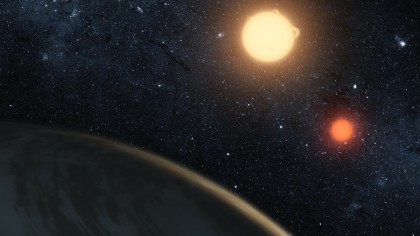
Introduction
The Star Wars universe is packed with evocative locations, from the desert planets of Tatooine and Jakku in The Force Awakens, to the frozen environs of Hoth, the Cloud City of Bespin, the entrancing lakes of Naboo and the volcanic nightmare of Mustafar.
Is Earth most like the city-covered planet of Coruscant, made famous in Star Wars as the political and navigational centre of the Star Wars universe? Perhaps, or maybe it's more like the forested Sanctuary Moon of Endor. Either way, you don't have to travel to a galaxy far, far away to find the planets of Star Wars. They're all in our own Milky Way galaxy – and even in our Solar System.
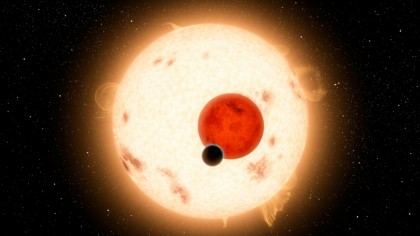
Tatooine's binary suns in A New Hope - Kepler-16b
"If there's a bright centre to the universe, you're on the planet that's farthest from," says Luke Skywalker in A New Hope. Rocky Tatooine does look a bit dull, but with two suns it's not all bad. The double-sunset Luke witnesses in ANH has to be one of the most iconic scenes in the entire series, but surely there's nothing like that in real life?
Actually, it's our solitary Sun that's the odd one out here; astronomers reckon that about 80% of stars are multiple-star systems, which means that worlds with two, three or even seven sunsets are the norm. The half-gas, half-rock, Saturn-like Kepler-16b was the first circumbinary planet found, around 200 light years from Earth in the direction of the constellation of Lyra, but scientists have since found nine more.
Multiple star systems are everywhere you look; next time you're outside in clear night skies, look north to find the second star in from the tip of the handle of the Plough/Big Dipper and you'll notice that it's an obvious double star.
However, the bigger star Mizar is actually four stars while smaller star Alcor is two, all gravitationally bound. Beat that, Tatooine.
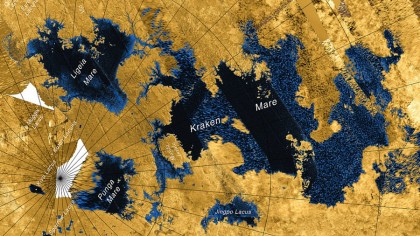
Naboo's lakes - Titan, Saturn System
It's arguably one of the most cringe-worthy scenes in Star Wars, but the clunky dialogue between Padmé and Anakin midway through Attack of the Clones takes place at one of its most beautiful locations.
However, the waterside views of Lake Retreat on the planet Naboo can be found in reality, too. On Saturn's moon Titan, NASA's Cassini spacecraft has spotted the only known non-Earth lakes and seas. However, these lakes near the moons poles contain not water, but liquid methane and ethane, and are thought to be fed from underground.
It's possible the lakes are seasonal, though no spacecraft has hung around out here – a billion kilometers from Earth – for long enough to find out; since Saturn orbits the Sun every 29 years, the four seasons on the planet and its moon last about seven years each.
Cassini first spotted the lakes back in 2007, and in November saw huge icy storm clouds on Titan that signalled its early entry into a long winter where temperatures drop to minus 180°C/292°F. Thankfully that's enough to kill off primitive cartoon characters like Jar Jar Binks.
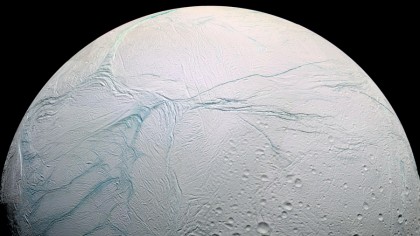
The icy planet Hoth - Enceladus, Saturn System
The largest of six planets in the remote Hoth system is all snowdrifts and ice, and the perfect place for the secret Echo Base in The Empire Strikes Back. Well, it would have been if it wasn't for those darned Imperial drones.
If the Rebel Alliance ever make it to our solar system, they might want to check-out Saturn's sixth-largest moon Enceladus. It's completely covered by ice, and like Hoth is rained on by asteroids, so it's pock-marked by impact craters. However, it's much colder than Hoth – as low as -198°C/-324°F – so the Taun-Tauns might need fattening up before being sliced open at bed-time.
This tiny moon is far from what astronomers considered the 'habitable zone' around our Sun, which is why the discovery by Cassini in 2005 of a towering plume of ice, water vapor and organic molecules spraying from the moon's south polar region was such a shock. Known to be geologically active, scientists think that there could be a warm-ish ocean beneath the ice on Enceladus … and, therefore, simple life. Probably no Wampa though.
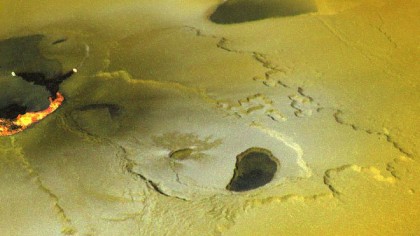
Mustafar volcanic planet - Io, Jovian System
The fiery planet in the Outer Rim Territories, where Anakin and Obi-Wan out their lightsabers on each other during Revenge of the Sith, finds one equal in our solar system. Io, the fourth-largest moon of Jupiter, is a similarly tormented place.
Orbiting closest to the gas giant (and so blasted with deadly radiation) Io is easily the most volcanically active place in the solar system, with the 202 kilometres/126 mile Loki Patera – a sea of magma – closely resembling those of Mustafar.
For good measure there is also a tidal subsurface ocean of molten rock and a couple of sulphur plumes. First glimpsed by the Voyager probes back in the late 1970s, Pillan Patera and the Prometheus plumes – aside from being a great name for a band – send sulphur dioxide streams rocketing up about 140 km/90 miles.
With no water and temperatures of up to 1,649°C/3,000°F near its many volcanoes, on Io as on Mustafar you're pretty much guaranteed to end up a mentally unravelling, limbless torso whose only choice is to turn to the Dark Side.
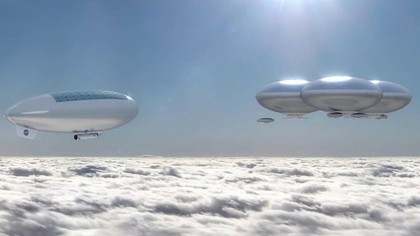
Bespin, Cloud City - Venus
From the East Platform where Boba Fett left with a frozen Han Solo to the weather vein where a one-handed Luke Skywalker clung on for his life after duelling with his dad, the floating Cloud City plays a pivotal role in the original trilogy's best film - The Empire Strikes Back.
ESB's Cloud City is a gas mining colony above a hot gas giant, which is a similar scenario presented by the often ignored planet Venus. While its surface temperature is a whopping 462°C/864°F, the upper atmosphere of venus – like Bespin – is hot, but at 75 °C/167°F, it's habitable. Like Bespin, it's cloudy, too.
Should Venus replace Mars as mankind's go-to planet? That's the thinking behind NASA's High Altitude Venus Operational Concept (HAVOC), in which a solar-powered, crewed airship would – after an initial robotic mission – stay for 30 days in the upper atmosphere.
Phase 3 would see a two-man mission to spend a year up there, followed finally by a permanent, floating cloud city. That's if the Empire doesn't get there first …

Jamie is a freelance tech, travel and space journalist based in the UK. He’s been writing regularly for Techradar since it was launched in 2008 and also writes regularly for Forbes, The Telegraph, the South China Morning Post, Sky & Telescope and the Sky At Night magazine as well as other Future titles T3, Digital Camera World, All About Space and Space.com. He also edits two of his own websites, TravGear.com and WhenIsTheNextEclipse.com that reflect his obsession with travel gear and solar eclipse travel. He is the author of A Stargazing Program For Beginners (Springer, 2015),